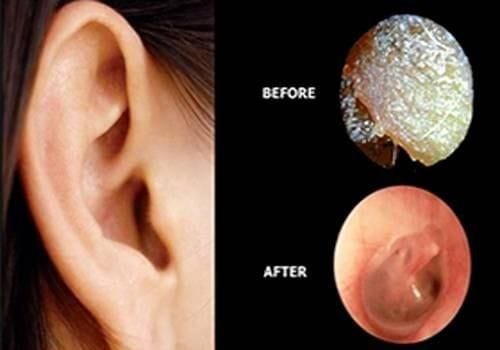£50 Per Treatment
Introduction to Ear Irrigation
Ear irrigation is a safe and effective method used to remove excess earwax, also known as cerumen, which can accumulate and cause discomfort, hearing loss, and other issues. This procedure involves using a warm, controlled water flow to gently flush out earwax, improving hearing clarity and ear health. Ear irrigation is a common and non-invasive treatment that offers immediate relief.
Detailed Description
Ear irrigation uses a gentle stream of warm water to flush out excess earwax from the ear canal. The warm water helps soften the earwax, making it easier to remove. This method is particularly effective for those who produce excessive earwax or have impacted earwax that can’t be removed through regular cleaning.
Benefits and Results
Ear irrigation offers several advantages, including:
- Enhanced Hearing Clarity: Removing excess earwax can significantly improve hearing.
- Comfort and Relief: Alleviates symptoms such as earache, fullness, and itching.
- Safe and Non-Invasive: A gentle and effective alternative to more invasive procedures.
- Immediate Results: Many individuals experience immediate improvement in hearing and comfort.
Ideal Candidates
Ear irrigation is suitable for most individuals experiencing issues related to earwax buildup, including:
- Adults and Children: Adults and some exceptions for under eighteens.
- Individuals with Excessive Earwax: Those who naturally produce a lot of earwax or have a history of earwax impaction.
- People with Hearing Issues: Experiencing muffled hearing, ear fullness, or discomfort due to earwax buildup.

How the Treatment is Administered
Ear irrigation is a straightforward procedure that can be performed in a short office visit. Here’s how it typically works:
- Preparation: Lisa will examine your ears to determine if ear irrigation is appropriate. If there is a lot of hard, impacted wax, a softening agent may be applied beforehand.
- Procedure: An electronic irrigation system is used to deliver a warm, controlled flow of water into the ear canal.
- Flushing: The water loosens and flushes out the earwax, which is collected in a basin placed under the ear.
- Completion: After the irrigation, Lisa will check your ear to ensure all the wax has been removed and that your ear canal is clear.
Duration and Frequency
Ear irrigation is a quick procedure, typically taking 15 to 30 minutes per session. Most individuals only need one session to achieve the desired results. However, if you produce a lot of earwax, regular cleanings may be recommended to prevent future buildup every year.
Before and After Care
Before Care:
- Consultation: Discuss any ear-related symptoms, medical conditions, or concerns with Lisa.
- Softening Agents: You will be advised to use olive oil to soften the wax a few days before the procedure.
After Care:
- Dry Ears: Keep your ears dry for a few hours after the procedure to prevent infection.
- Monitor: Watch for any signs of infection, such as increased pain, discharge, or persistent hearing issues.

Safety Concerns and Side Effects
Ear irrigation is generally safe when performed correctly, but it’s important to be aware of potential risks and consult with Lisa.
Possible Side Effects:
- Common: Mild discomfort, dizziness, or temporary hearing changes.
- Rare: Ear infections, perforated eardrum, or damage to the ear canal.
Precautions:
- Medical History: Inform Lisa of your full medical history, especially any ear surgeries or conditions like perforated eardrums.
- Symptoms: If you experience severe pain or persistent hearing issues after the procedure, seek medical attention.
Scientific Background
Ear irrigation is a well-established medical procedure supported by research highlighting its efficacy and safety.
Key Studies:
- Efficacy: Studies show that ear irrigation is effective in removing earwax and improving hearing.
- Safety: Research indicates that ear irrigation is a safe procedure with minimal risk when performed by trained professionals.
Comparisons to Other Treatments
Ear irrigation offers unique benefits compared to other earwax removal methods:
- Manual Removal: While manual removal with tools like curettes can be effective, it requires a skilled practitioner and carries a higher risk of ear canal injury.
- Ear Drops: Over-the-counter ear drops can soften earwax, but may not be effective for significant buildup or impaction.

Testimonials and Case Studies
Many individuals have experienced the benefits of ear irrigation. Here are a few testimonials and case studies:
- Testimonial: “After the ear irrigation, I noticed an immediate improvement in my hearing. The procedure was quick and painless, and I felt so much better afterward.”
- Case Study: A 40-year-old woman with a history of earwax buildup experienced significant hearing improvement and relief from ear fullness after a single ear irrigation session.
FAQs
- Q: How quickly will I see results from ear irrigation?
- A: Many people experience immediate improvement in hearing and comfort after the procedure.
- Q: Can I use ear irrigation at home?
- A: While home ear irrigation kits are available, it is safer and more effective to have the procedure performed by a trained professional like Lisa.
- Q: Is ear irrigation painful?
- A: The procedure is generally not painful, but you may feel a slight discomfort or pressure during the irrigation.
Conclusion
Ear irrigation is a powerful tool for removing excess earwax and improving hearing clarity. Whether you’re experiencing discomfort, hearing issues, or simply want to maintain good ear health, this procedure offers a safe and effective solution. Consult with Lisa to see how ear irrigation can benefit you and start your journey towards better hearing and comfort today.

